Welcome to The Bilastrator's 2015-16 College Hoops Opus. But before having your mind blown and your consciousness expanded by The Bilastrator's revealing vision of the future, The Bilastrator must caution you:
If you read this Opus, the mystery of the season will be gone. Upon reading The Opus -- the most comprehensive presaging forecast of what will happen in college basketball -- you will forever be educated in the game and no longer subject to surprise and wonder.
For example, in last season's Opus, The Bilastrator told all who could read that the top title contenders were Kentucky, Duke and Wisconsin, and The Bilastrator similarly told you that Arizona, Gonzaga, Michigan State and Louisville were Final Four favorites. All were in the Elite Eight or beyond. In addition, The Bilastrator told all that Georgia State was among the teams that could make some noise, which it did, and that R.J. Hunter was the nation's top shooter heading into the season. Seven of The Bilastrator's Impact Newcomers were selected in the first round of the 2015 NBA draft. Nostradamus didn't have anywhere near the accuracy of The Bilastrator.
Now that you have been properly warned, welcome to total consciousness of what can and will happen in college basketball. So, you have that going for you, which is trill. As always, there is no need to thank The Bilastrator. You're welcome.
The Bilastrator's Wooden Award favorites
This season, for the unwashed masses, there are no surefire or can't-miss candidates for the Wooden Award. It is more like a coach of the year race, and there will be a fair amount of wait and see before it shakes out. This could be a year in which a Victor Oladipo-type player comes out of the pack to separate himself. Who knows?
The Bilastrator knows, and here are his top candidates for the top award in the land.
1. Kyle Wiltjer, Gonzaga
Wiltjer could very well lead the nation in scoring. If he has a scoring year like Creighton's Doug McDermott had a couple of years ago, he could carry the Wooden Award back to Spokane.
2. Ben Simmons, LSU
Simmons is the best prospect and The Bilastrator's leader to be the overall No. 1 pick in the NBA draft. Will he score enough points and will his team match his talent?
3. Kris Dunn, Providence
Talent-wise, few can match Dunn. The question is whether his team will keep his talent on the Wooden Award level. Dunn is the best point guard in the country.
4. Malcolm Brogdon, Virginia
When he is assertive, there are few wings better than Brogdon, especially when defense is factored in. Playing so unselfishly within Tony Bennett's team concepts may not lead to taking home the Wooden Award.
5. Buddy Hield, Oklahoma
The Bahamian Bomber has improved every season, and he will likely lead the Big 12 in scoring. If Oklahoma can unseat Kansas and Hield has a big year, the Wooden Award is possible.
The Bilastrator's All-Americans
First team
Kyle Wiltjer, Gonzaga
Ben Simmons, LSU
Kris Dunn, Providence
Malcolm Brogdon, Virginia
Buddy Hield, Oklahoma
Second team
Ron Baker, Wichita State
Skal Labissiere, Kentucky
Georges Niang, Iowa State
Melo Trimble, Maryland
Marcus Paige, North Carolina
Third team
Denzel Valentine, Michigan State
Jamal Murray, Kentucky
Nigel Hayes, Wisconsin
Jaylen Brown, California
Caris LeVert, Michigan
Fourth team
Brandon Ingram, Duke
Henry Ellenson, Marquette
Jakob Poeltl, Utah
Damian Jones, Vanderbilt
Malik Newman, Mississippi State
The Bilastrator's super six won't-miss legit national title contenders
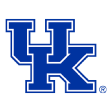
Kentucky Wildcats
It's "Groundhog Day" in Big Blue Nation. The Wildcats are, again, young and supertalented. The talent, however, is more on the perimeter than up front. Kentucky will win and win big, but it will be a process. The Bilastrator knows John Calipari can handle it. The only question: Can Kentucky be an elite defensive team with perimeter talent?
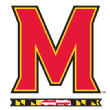
Maryland Terrapins
Mark Turgeon has a tough schedule, but a tough team, too. Depth, experience and talent are nice things. So is an elite point guard. Maryland will challenge for the whole thing. The only question: Can Maryland adapt to more weapons, and have veterans do more while scoring less?

Duke Blue Devils
Mike Krzyzewski has said the goal at Duke is to be young every year. Well, Duke is young. Only a few of his players are wearing last year's championship rings, but the newcomers are good enough to challenge for another. Like Kentucky, this will be more of a perimeter show. The only question: Will Duke defend at the championship level?
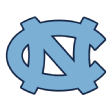
North Carolina Tar Heels
The Heels are older and experienced. While North Carolina lost a dozen games last season, much of the year was with hobbling players. This year, healthy, Carolina can beat anyone. The only question: How will the Heels shoot the ball?
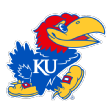
Kansas Jayhawks
The Jayhawks have no no-brainer NBA lottery picks, but have a stacked roster of vets and rookies that will win the Big 12 again (shocker) and give Bill Self another legit shot at a title. The only question: Will Wayne Selden give Kansas consistent scoring?

Virginia Cavaliers
Tony Bennett has it rolling at Virginia, and the presence of Malcolm Brogdon gives the 'Hoos a chance for it all. The only question: Can Virginia bring its best in the NCAA tournament?
The Bilastrator's next six book-your-travel-now Final Four contenders

Michigan State Spartans
Tom Izzo's Spartans can really shoot it.

Oklahoma Sooners
The team with the best chance to unseat Kansas in the Big 12. Buddy Hield has to be POY good.
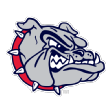
Gonzaga Bulldogs
The Bulldogs will be bigger than any team they play. If the Gonzaga guards are solid, this is a legit contender.
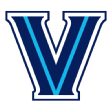
Villanova Wildcats
The Wildcats are hungry and still smarting from last year's season finish. Villanova will be smaller, but quick and explosive off the dribble.
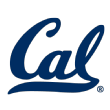
California Golden Bears
There is real talent in Berkeley, and Cuonzo Martin has NBA players on the roster. This could be Cal's year.
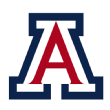
Arizona Wildcats
There are new faces all over the floor, including a new point guard, and they are already down a stud after Ray Smith injured his knee. Still, Sean Miller will win. Period.
The Bilastrator's nontraditional teams you'll want in your bracket
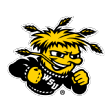
Wichita State Shockers
Fred VanVleet and Ron Baker are more than enough, but coach Gregg Marshall has quality transfers in Anton Grady and Conner Frankamp. The Shockers won't shock anyone.
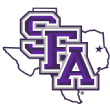
Stephen F. Austin Lumberjacks
Thomas Walkup is back, and SFA will be in the NCAA tournament again, with a chance to beat somebody. The Lumberjacks have a certain Kansas feel in the Southland. They win it every year.

Valparaiso Crusaders
Bryce Drew has big man Alec Peters and defensive whiz Vashil Fernandez back, and a chance to add to Drew's three Horizon titles.

Central Michigan Chippewas
Chris Fowler and John Simons make CMU a contender in the MAC, but you can be really good and not win that league. The MAC title may be the toughest to win in college basketball.

Old Dominion Monarchs
Trey Freeman is an outstanding guard, and he makes the Monarchs a winner again. ODU won 27 games last year, and will be better this year.
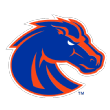
Boise State Broncos
Anthony Drmic is back from injury, and James Webb is an underrated star for Leon Rice, one of the best offensive coaches in the country.
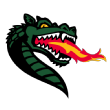
UAB Blazers
Jerod Haase returns his top six scorers from a team that started slow, then slowly started to get it. This year, led by Robert Brown, UAB should start faster and still improve.

VCU Rams
The Rams lost Shaka Smart, but they didn't forget how to win and compete. VCU will be good again.

Belmont Bruins
Rick Byrd has four starters back. Craig Bradshaw averaged 18 ppg last year, shooting 42 percent from deep, and Evan Bradds is more efficient than solar. The Bruins are good again.
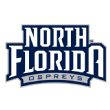
North Florida Ospreys
The Ospreys return their top three scorers and six of the top seven from a team that won 23 games and made the NCAA tournament.

Akron Zips
The Zips have won 20 or more for 10 straight years, and have made the NCAA tournament in three of the past seven seasons.

Evansville Purple Aces
The Aces play the way Indiana used to. D.J. Balentine is a 20 ppg scorer that can play with anyone.

Northern Iowa Panthers
Losing Seth Tuttle leaves a big, passing, scoring hole in Ben Jacobson's line-up, but there are quality shooting returnees, led by Wes Washpun and Paul Jespersen, and a 6-11 freshman Justin Dahl to pick up any slack. Will the Panthers be as good as last year's team? Maybe not, but they don't have to be. This is a really good team.
The Bilastrator's impact transfers
Eron Harris, Michigan State (from West Virginia)
Damion Lee, Louisville (from Drexel)
Sterling Gibbs, UConn (from Texas, then Seton Hall)
Anton Grady, Wichita State (from Cleveland State)
Mark Tollefson, Arizona (from San Francisco)
Trey Lewis, Louisville (from Cleveland State)
Terry Henderson, NC State (from West Virginia)
Tyler Lewis, Butler (from N.C. State)
Conner Frankamp, Wichita State (from Kansas)
Shonn Miller, UConn (from Cornell)
Robert Carter, Maryland (from Georgia Tech)
Ryan Anderson, Arizona (from Boston College)
Ricky Tarrant, Memphis (from Tulane, then Alabama)
Rasheed Sulaimon, Maryland (from Duke)
Sterling Smith, Pittsburgh (from Coppin State)
Seth Allen, Virginia Tech (from Maryland)
The Bilastrator's see-you-in-the-green-room impact freshmen
1. Ben Simmons, LSU
Simmons is ridiculous. He just knows how to play, and he is a phenomenal passer and playmaker. Simmons was said to be behind a bit defensively, but he was outstanding on the defensive end in Los Angeles at the Nike Skills Academy. All you can say is "Wow."
2. Skal Labissiere, Kentucky
Finally cleared to play, Labissiere is a difference-maker in the paint for Kentucky. He can run, finish plays, block shots, rebound and he has a skilled offensive game.
3. Jalen Brown, California
Brown is a baller, and he can get to the rim with power and athleticism. He will be among the top scorers in the Pac-12, and could challenge Simmons for rookie of the year.
4. Jamal Murray, Kentucky
Murray was fabulous in international competition, both at the Pan Am Games and Nike Hoop Summit. He showed he will be a major impact player at Kentucky. Murray is very sound, skilled and knows how to play with others.
5. Brandon Ingram, Duke
Ingram is tall, rail thin, and incredibly long. Yet, he is skilled enough to initiate offense or post a smaller guy, and he can play anywhere on the floor. Mike Krzyzewski will give him freedom, and use him all of the court.
6. Henry Ellenson, Marquette
Ellenson is a talented scorer and rebounder, and will instantly be the go-to guy at Marquette. He is strong, with a nasty streak, which is good for any freshman, let alone one with elite talent.
7. Terance Mann, Florida State
At 6-foot-5 with size, length and athletic ability, Mann has great talent, and has already impressed with his readiness. He is not yet a household name, but will be.
8. Cheick Diallo, Kansas
How this man is not cleared yet is beyond comprehension, and defies common sense. He speaks four languages and he has successfully handled college work, and the NCAA is worried about classes in Mali? Really? Once Diallo is on the court, his size and motor will make him among the most productive rookies in the nation.
9. Malik Newman, Mississippi State
Newman is a scorer, and sees a big basket every time the ball comes his way. He is not a selfish player, but he takes it upon himself to score, and he can get his own.
10. Jalen Bruson, Villanova
The son of former Temple and NBA star Rick Brunson, Jalen Brunson was excellent for the United States in the World U-19 Championships, playing for Arizona coach Sean Miller. Another freshman playing ahead of his years, Brunson has a great feel and understands the game, with a knack for making the right decision.
11. JaQuan Lyle, Ohio State: A scoring guard with size and the ability to play multiple spots, Lyle is not yet a great shooter, but he can score.
12. Ivan Rabb, California: A great get for Cal, as he grew up in nearby Oakland. Rabb is a lefty with size, length and skill. He can rebound and block shots, and he will be excellent offensively.
The Bilastrator's best offensive rebounders
Rico Gathers, Baylor
AJ West, Nevada
Charles Mitchell, Georgia Tech
Tonye Jekiri, Miami
Angel Delgado, Seton Hall
Josh Scott, Colorado
Kennedy Meeks, North Carolina
Amile Jefferson, Duke
Caleb Swanigan, Purdue
Jaylen Bond, Temple
Michael Young, Pittsburgh
Thomas Bryant, Indiana
John Brown, High Point
Rafael Maia, Pittsburgh
Denzell Taylor, Old Dominion
Cheick Diallo, Kansas
Dedric Lawson, Memphis
Ivan Rabb, California
The Bilastrator's best big men
Skal Labissiere, Kentucky
Damian Jones, Vanderbilt
Henry Ellenson, Marquette
Shawn Long, Louisiana-Lafayette
Perry Ellis, Kansas
Domantas Sabonis, Gonzaga
Nigel Hayes, Wisconsin
Jakob Poeltl, Utah
Brice Johnson, North Carolina
Ivan Rabb, California
Robert Carter, Maryland
Przemek Karnowski, Gonzaga
Daniel Ochefu, Villanova
Kaleb Tarczewski, Arizona
Amida Brimah, UConn
Stephen Zimmerman Jr., UNLV
Cheick Diallo, Kansas
A.J. Hammons, Purdue
Zach Auguste, Notre Dame
Reid Travis, Stanford
Thomas Bryant, Indiana
Rico Gathers, Baylor
Kennedy Meeks, North Carolina
Chase Jeter, Duke
Diamond Stone, Maryland
Alec Peters, Valparaiso
The Bilastrator's top floor leaders
Kris Dunn, Providence
Melo Trimble, Maryland
Tyler Ulis, Kentucky
Fred VanVleet, Wichita State
Monte Morris, Iowa State
Demetrius Jackson, Notre Dame
Bronson Koenig, Wisconsin
Marcus Paige, North Carolina
Frank Mason Jr., Kansas
Nic Moore, SMU
Yogi Ferrell, Indiana
Denzel Valentine, Michigan State
Tyler Dorsey, Oregon
London Perrantes, Virginia
Derryck Thornton, Duke
Tyrone Wallace, California
Gary Payton II, Oregon State
Jack Gibbs, Davidson
Jamal Murray, Kentucky
Juan'ya Green, Hofstra
Antonio Blakeney, LSU
Ryan Arcidiacono, Villanova
Isaiah Taylor, Texas
Xavier Rathan-Mayes, Florida State
D'Vauntes Smith-Rivera, Georgetown
Angel Rodriguez, Miami
Stefan Moody, Ole Miss
The Bilastrator's top wings
Ben Simmons, LSU
DeAndre Bembry, Saint Joseph's
Brandon Ingram, Duke
Jaylen Brown, California
Georges Niang, Iowa State
Daniel Hamilton, UConn
Kyle Collinsworth, BYU
Grayson Allen, Duke
Taurean Prince, Baylor
Jae'Sean Tate, Ohio State
Ron Baker, Wichita State
Roosevelt Jones, Butler
Winston Shepard, San Diego State
Vince Edwards, Purdue
Danuel House, Texas A&M
Trevon Bluiett, Xavier
D.J. Balentine, Evansville
Jake Layman, Maryland
Josh Hart, Villanova
Justin Jackson, North Carolina
Tim Quarterman, LSU
Damion Lee, Louisville
Malcolm Hill, Illinois
Troy Williams, Indiana
E.C. Matthews, Rhode Island
Malik Pope, San Diego State
Sheldon McClellan, Miami
Dillon Brooks, Oregon
Six things you should know about the 2015-16 season
1. Gonzaga will score at will in the post
Domantas Sabonis is the second-most efficient returning scorer in the post. Przemek Karnowski isn't far behind (9th). Kyle Wiltjer, who is the leading returner in win shares, and third among returnees in both PER and effective field goal percentage, is the 14th-most effective returning post player. Let's put it this way: Three Gonzaga players appear on that list before 340 other teams can claim even one.
2. Virginia's Anthony Gill will get his due
Among returning players, Gill has the highest win shares per 40 minutes of any player. Basically, he contributed more to his team's wins than anyone else. Gill's PER was top 20 in the country last season and second in the ACC to Jahlil Okafor. He's well-rounded and efficient. His offensive rebound percentage was top 10 in the country, and he can really defend, ranking 14th in defensive rating, sixth among returning players.
3. Central Michigan's John Simons is the best unknown offensive player
Simons averaged 12.3 ppg last season on 49.8 percent field goal shooting. However, the 6-8 Simons took 3-pointers at a phenomenal rate, with 82.3 percent of his attempts from 3-point territory. The Chippewas scored 144.0 points per 100 possessions while Simons was on the court, giving him the best offensive rating in the nation. Simons' true shooting percentage was a ridiculous 71 percent, making him, statistically, the most dangerous offensive weapon in college basketball.
4. The mid-major team to watch is Old Dominion
The Monarchs had the best transition defensive in the country, 9.4 percent more efficient than any other team. ODU finished 27-8, losing to Stanford in the NIT semis, after a close loss to Middle Tennessee in the C-USA championship game. ODU was 17-0 at home, returns its top two scorers, and four of its top six. The Monarchs have improved from five wins to 18 wins to 27 wins over the past three seasons, and you may very well see another jump this season.
5. Villanova's Daniel Ochefu will make you love basketball
If you can take your eyes off of Jay Wright's suits and pocket squares, which put Rece Davis' to shame, keep your eyes on Daniel Ochefu. Simply put, he may very well be the hardest worker in college basketball. His rebound percentage was fifth in the country. When the Wildcats when to a four-guard lineup, he was left to do all of the dirty work. It's what made Villanova a top-5 team. His defensive rating was eighth in the nation and he's led the Big East in defensive rating in each of the last two seasons. He shot 64.4 percent from the field to lead the conference. He was second in the conference in PER and led the Big East in win shares per 40 minutes. Ochefu is a hard-hat-wearing, lunch-pail-carrying "I-gotta-go-to-work" beast.
6. The 'new' rules are necessary and will work
There will be a lot of commentary about the "new" rules, and rightfully so. But don't listen to the "if it ain't broke, don't fix it" crowd or the "it gives an advantage to the better players" crowd. For too many years, college basketball was not properly maintained and administered, and the game got away from us. It was not a bad game and it's still great, but it is not as good as it should be. Basketball is a players' game, and the game has evolved. With a 30-second shot clock, things will get a tiny bit better, but the real improvement will be in the way the game is officiated. We need freedom of movement so cutters and drivers can move without being illegally impeded. Nobody is asking that incidental contact be called a foul. NOBODY. However, when legit fouls are called, players and coaches will adjust, and the game will be better. The game just needs to stick with it through the rough patches, just like the NFL and NBA did. It's not a big deal. It will lead to a better game for players and fans.
The Bilastrator's on-time and on-target best passers
1. Kris Dunn, Providence
Kris Dunn led the nation in assist percentage at 50 percent. In the past five seasons, only one player had a higher percentage: Jason Brickman (Long Island) in 2013-14. Dunn was third in total assists and fifth in assists per game in the country.
2. Denzel Valentine, Michigan State
The Bilastrator had Valentine as the nation's best passer in last year's Opus. Valentine has not fallen, but Dunn has risen. Valentine has great vision, courage and, now, maturity to make the easy play. Because he is one of the very best all-around players in the country when there is a pass to be made, The Bilastrator wants the ball in Valentine's hands.
3. Monte Morris, Iowa State
Even playing an up-tempo game for Fred Hoiberg, Morris rarely turned the ball over, and averaged more than five assists and barely one turnover per game. The Flint, Michigan, native is reliable, and will be a tremendous asset to first-year coach Steve Prohm.
4. Tyler Ulis, Kentucky
Ulis sees the floor, is always under control and can hit open shots or drive past defenders. He is a leader, and his on-ball defense sets the tone for Kentucky.
5. Kyle Collinsworth, BYU
Collinsworth is a record-holding triple-double machine, and does as much for his team as any player in the country. He had six triple-doubles last season, so he fills the box score, but passing is a big part of his game. Collinsworth led the WCC in total assists and ranked in the top 20 in the country in assists per game and assist percentage.
6. Jacob Enevold Jensen, Drake
While underappreciated, Enevold Jensen can pass out of the post as well as anyone in the nation. Enevold Jensen, a 7-footer from Denmark, is very efficient when the ball goes into him, and the Bulldogs shot an effective 84.6 percent on his passes, and his passes contributed to the highest efficiency in the nation (minimum 20 plays).
7. Chris Davenport, North Florida
Davenport's passing out of isolation led to the highest points per play in the country (minimum 15 plays). The Ospreys shot an effective field goal percentage of 85.7 percent off of Davenport's isolation passes.
8. Fred VanVleet, Wichita State
Awareness and vision make VanVleet a great passer, but he is also a winner. Wichita State is 95-15 in his three seasons, winning at least one NCAA tournament game each year.
9. Kahlil Felder, Oakland
Felder, at 5-foot-9, gives hope to all of the little guys. He averaged 7.0 apg last season, fourth in the nation. Felder had 48.7 percent of the team's total assists.
10. Yogi Ferrell, Indiana
He's played big minutes since he arrived on campus and now there is no question that he's the leader of the team. Ferrell has improved his assist percentage, offensive rating and PER in each season thus far. Indiana had one of the top offenses in the nation last year and Ferrell's passing is a big reason why.
11. Demetrius Jackson, Notre Dame
If you watched Notre Dame play last season, you already know Jackson is their floor leader. He had a 2.04 assist/turnover ratio and with his passing, the Irish had the most efficient offense in the nation per play. Jackson will keep his assists up, but his scoring will go through the roof this season, too.
12. Juan'ya Green, Hofstra
A transfer from Niagara when his coach, Joe Mihalic took over the Pride program, Green is an elite passer. He averaged 6.5 assists last season after averaging five assists at Niagara. Green is also a scorer, averaging over 17 ppg while shooting better than 82 percent from the foul line. He will have scored over 1,000 points at two different Division I schools if he stays healthy.
13. Alex Caruso, Texas A&M
Recruited as a shooting guard that could pass, Caruso played the point for Billy Kennedy his first two years, and got a little worn down by the end of the season. This year, South Florida transfer Anthony Collins will take the point, and Caruso can be the best passing shooting guard in the country.
14. James Robinson, Pittsburgh
The DeMatha product hardly ever turns the ball over, and his coaching staff would like to see a few more turnovers because that would indicate he is being more assertive and taking a few more chances.
The Bilastrator's sweet sixteen best defenders
1. Rapheal Davis, Purdue
Matt Painter was Davis' fifth coach in five years of basketball, and the first of his coaches to stress defense as his calling card. His answer: Davis was named Big Ten Defensive Player of the Year. Numbers don't tell the story on Davis. He can and does guard anyone at any position, and The Bilastrator knows of no player that works any harder on the defensive end.
2. Amidah Brimah, UConn
He led the NCAA in blocks last season and was second in the country in block percentage and blocks per game.
3. Gary Payton II, Oregon State
Payton II had the second most defensive win shares in the country, was second in steals percentage and steals per game and third in total steals. And he was 10th in defensive rating.
4. Sindarius Thornwell, South Carolina
The numbers rate Thornwell as the best returning man-to-man defender in the NCAA. Opponents shot just 24.3 percent against him and Thornwell forced turnovers on 20.7 percent of plays.
5. Kris Dunn, Providence
After watching Dunn up close for several days in Los Angeles, The Bilastrator is convinced that the best point guard in the nation is playing for the Friars. With length and athleticism, there is no guard Dunn cannot guard. He gets deflections, stays in front and can hound almost anyone.
6. Malcolm Brogdon, Virginia
With his size, strength and grit, there is not a position out on the floor that Brogdon cannot guard -- and shut down. Every single coach in America wants Brogdon on his team. Every single one.
7. Hassan Martin, Rhode Island
Martin is only 6-7, but the left-hander has long arms and huge hands, and he blocks and changes a ton of shots with his timing and quickness off the floor. Martin averaged almost 12 points, 8 rebounds and over 3 blocks per game last season. He also led the Atlantic 10 in blocked shots, and stood sixth in the nation.
8. A.J. Hammons, Purdue
The Boilermaker big man, often criticized for not being more, has been very good on the defensive end. Hammons blocks and challenges shots, and does a solid job on the defensive glass. Without Hammons' presence in the paint, Davis would not be quite as effective, and perhaps not No. 1 on this list.
9. Shonn Miller, UConn
The Cornell transfer led the Ivy League in defensive rating, win shares and defensive rebound percentage. Miller was also among the Ivy leaders in steals percentage and block percentage.
10. Anthony Gill, Virginia
Gill was second in the ACC in defensive rating, and ACC opponents steered away from him because he does his work early and plays his assignment before he ever gets the ball.
11. Jevon Carter, West Virginia
The Mountaineers led the NCAA in forcing turnovers and Carter led the Big East in steals percentage and was seventh in the nation. He was also among the best pick-and-roll defenders in the country.
12. Shawn Long, UL-Lafayette
Long led the Sun Belt in blocks percentage, defensive rebound percentage and was in the conference's top 10 in defensive rating and defensive win shares.
13. Vashil Fernandez, Valparaiso
Fernandez led the Horizon League in blocks percentage and defensive rating. His blocks percentage ranked third in the country. He allowed just 35.1 percent shooting, while forcing turnovers on 20.5 percent of plays in the post.
14. Jordan Fouse, UW-Green Bay
Fouse was in the top 10 in the Horizon League in steals percentage, blocks percentage, defensive rebound percentage, defensive rating and defensive win shares. He's especially good defending spot-up jumpers. Opponents shot just 20.5 percent on that play type last season against him.
15. Markus Kennedy, SMU
Two seasons ago, Kennedy was in the top 5 in the AAC in steals percentage, blocks percentage, defensive rebound percentage, defensive rating and defensive win shares. Last season, he missed time due to eligibility issues but was still one of the top defenders in the nation, allowing just 18.8 percent shooting on post ups.
16. Skylar Spencer, San Diego State
Spencer led the Mountain West in blocks percentage and defensive rating, ranking in the top six in the country in both categories. He was among the best post defenders and spot up defenders in the nation, allowing less than 30 percent shooting on both play types.
The Bilastrator's super six movie ballers
Scott Howard ("Teen Wolf")
I want the Michael J. Fox version of "Teen Wolf" as my point guard. He could get to the rim at will and had the biggest vertical ever recorded for a basketball-playing wolf. He had amazing athletic ability, as was shown when he doing hand stands and backflips on top of Stiles' wolfmobile.
Kyle Watson ("Above the Rim")
Watson was being recruited by Georgetown. He could play streetball and in a gym. And, he turned down Tupac. Nobody puts Baby in the corner, and nobody turns down Tupac. Watson's PER and offensive rating solidify his place on the team.
Jesus Shuttlesworth ("He Got Game")
Ray Allen played Shuttlesworth for Spike Lee, and Shuttlesworth was one of the top high school prospects in the country, bypassing the NBA for Big State.
Jimmy Chitwood ("Hoosiers")
"I'll make it." That's the guy I want on my team. He was a terrific high school prospect and projects well to the college game. His pure shooting stroke and ability to run off of screens remind The Bilastrator of a young J.J. Redick.
Neon Boudeaux ("Blue Chips")
They tried to give him a car and he turned it down. Tough to suspend disbelief on that one. Boudeaux dominated the paint, was an incredible rim defender and played with tenacity. Neon was a beast, and played with and against Bobby Hurley, Penny Hardaway, Matt Nover and Calbert Cheaney.
Larsen ("The White Shadow") and The Good Alien ("I Come In Peace")
The Bilastrator was a Hollywood phenomenon in addition to being a hardwood genius. First, The Bilastrator was the star opposing player (and Playa) for Oakridge High School, a rival of Carver High in 1970s hit television show "The White Shadow." Then, The Bilastrator starred opposite Dolph Lundgren as an alien cop, ultimately dying in the back of Lundgren's car in an epic scene that would make anyone cry. Ladies and gentlemen, The Bilastrator has range.
The Bilastrator's most mind-blowing metrics for analytics lovers
1. Jameel Warney, Stony Brook
Last season, four players in the nation accumulated at least three offensive win shares and three defensive win shares. Only one returns: Warney. He led the America East in points, rebounds and blocks per game, in addition to PER.
2. Brandon Taylor, Utah
No returning player in the country defended the pick-and-roll ball handler better than Taylor. Opponents shot just 30.6 percent on pick-and-rolls against him. Taylor's effectiveness was fourth in the country last year (minimum 100 plays defended).
3. Gary Payton II, Oregon State
Payton II is the leading returnee in steals percentage (5.4 percent) and defensive win shares (3.2). Only Kentucky's Willie Cauley-Stein had more defensive win shares last year. Payton's 86.2 defensive rating was 10th in the country.
4. Ryan Taylor, Marshall
When things break down, Taylor can isolate and score. Taylor is the most efficient isolation player in the NCAA. Taylor shot 55.3 percent from the field in isolation, and went to the line on 23.4 percent of his isolation plays, an astoundingly high number. On more than 75 percent of his isolations, he'd drive the ball to the basket, where he was excellent at finishing, or forcing contact.
5. Kyle Wiltjer, Gonzaga
Wiltjer may be the most difficult player to defend in the nation. Among returning players, he has the most win shares, was third in PER and third in effective field goal percentage. He's one of two All-Americans back. He ranks among the top 10 returnees in efficiency as the roll man in a pick-and-roll. He's among the top-15 post-up players in the country. His spot-up effective field goal percentage is 57.8 percent, which was the same as Kentucky's Devin Booker.
The Bilastrator's top five photobombs
As you should know by now, The Bilastrator is very photogenic. Why deny the general public a photo of the Trillest Dude on the Planet? To quote Mike Krzyzewski, that would be cruel.
5. Bill Raftery at Louisville
The Bilastrator has no idea why the guy in the photo kept on that mask, but The Bilastrator's timing was impeccable.
4. The Big East at MSG
The Big East crew, a bunch of hardworking people that wanted to commemorate their service at the Mecca of College Basketball, became immortal due to The Bilastrator's selflessness.
3. Kentucky team photo
The Wildcats were talented when setting up for a photo. The photo became incredibly talented when The Bilastrator did a fly-by. You're welcome, Big Blue Nation.
2. Kevin Durant in OKC
How often does a fan get to take a photo with Kevin Durant? Better yet, how often does a fan get George Gervin, a Naismith Hall of Famer, to take the photo? Best of all, how often does a fan get to have The Bilastrator in the photo? And, the dude on the right is looking at his phone. How lame.
1. UCLA cheerleaders
The Bilastrator, minding his own business at Pauley Pavilion, has two UCLA cheerleaders jump right in front of him and snap a photo.
The Bilastrator's Top Net-Snapping Shooters
Kyle Wiltjer, Gonzaga
Bryce Alford, UCLA
John Simons, Central Michigan
A.J. English, Iona
Nick Zeisloft, Indiana
Craig Bradshaw, Belmont
Maodo Lo, Columbia
Daniel Dixon, William and Mary
Jared Brownridge, Santa Clara
Chase Fischer, BYU
Bryn Forbes, Michigan State
Marcus Paige, North Carolina
Buddy Hield, Oklahoma
Phil Forte, Oklahoma State
Caris LeVert, Michigan
Yogi Ferrell, Indiana
Cullen Neal, New Mexico
Allonzo Trier, Arizona
King McClure, Baylor
D.J. Hogg, Texas A&M
Luke Kennard, Duke
Malachi Richardson, Syracuse
Maverick Rowan, NC State
Matt McQuaid, Michigan State
Austin Grandstaff, Ohio State
Melvin Johnson, VCU
The Bilastrator's Shooters Analytics Geeks Love
1. Evan Bradds, Belmont
Bradds led the NCAA in effective field goal percentage last season at 69.7 percent. That was the highest mark in the country in more than 10 years. The last player with a higher effective field goal percentage was Adam Mark in 2002-03 of, you guessed it, Belmont.
2. Damon Lynn, NJIT
Lynn made 126 3-pointers last season, most in the country among returning players. He took more than 10 3-pointers per game, shooting 36.0 percent.
3. Alex Anderson, UT Martin
Anderson has the best 3-point field goal percentage in the nation among returnees. He shot 48.0 percent on 3-pointers last season. Over his last 16 games, that average shot up to 56.4 percent. He made 94 3-pointers, tied for 26th in the country.
4. Cornell Johnston, Eastern Illinois
On no-dribble, spot-up jumpers, Johnston was the most efficient shooter in the NCAA (min. 25 field goal attempts). His effective field goal percentage was 101.1 percent, more than two points per play. At 5-foot-7 and 150 pounds, Johnston was the OVC freshman of the year last season.
5. Nate Engesser, Denver
Among returning players, Engesser is the most efficient at coming off a screen (min. 30 plays). Engesser shot an effective field goal percentage of 79.2 percent when coming off of a screen and did not turn the ball over a single time on those plays.
6. Bogdan Bliznyuk, Eastern Washington
Among players with at least 25 plays against a zone, Bliznyuk had the highest effective field goal percentage in the country -- 95.8 percent. He scored on more than 60 percent of his plays against zone.
7. Geoffrey Groselle, Creighton
Singled-covered in the post, there was no better shooter than Groselle. The 7-foot, 240-pounder is a load in the post, and led the nation in field goal percentage from the post (minimum 50 post plays), shooting 68.4 percent from the floor.
8. Duncan Robinson, Michigan
A transfer from Williams College, Robinson is tall, long and can really shoot it. The Bilastrator watched him during Michigan practices while he was sitting out, and he never missed. And, he can really pass, too. All John Beilein has to do is get him open and Robinson will make it. Robinson is an amazing success story, from New Hampshire to DIII Williams to Ann Arbor. And, he's not done yet.
9. John Papale, Boston University
Papale is the best shooter from dribble handoffs, shooting an NCAA-best 78.3 percent effective field goal percentage (minimum 25 dribble handoffs).
10. Brice Johnson, North Carolina
A bit of an odd choice, but the analytics geeks love Johnson's ability to make buckets in transition. Johnson shot 92.3 percent in transition last season, best in the nation (minimum 25 transition plays) on an incredible 36-39 from the field. He may not win any HORSE games against this list, but if it's on the run, Johnson has a chance. He scored on more than 80 percent of his transition plays last season.
The Bilastrator's all-spelling bee name team
1. Egidijus Mockvicius, Evansville
2. Arkadiy Mkrtychyan, Idaho
3. YaYa Anderson, Radford
4. Carrington Love, UW-Green Bay
5. Sindarius Thornwell, South Carolina
6. Four McGlynn, Rhode Island
7. Jaron Blossomgame, Clemson
8. Juan'ya Green, Hofstra
9. Venky Jois, Eastern Washington
10. Deyshonee Much, Iona
The Bilastrator's nontraditional WOW team stats
1. VMI's pace
The Keydets averaged more than 77 possessions per 40 minutes, the fastest pace in the country. More than 50 percent of the team's field goal attempts were 3-pointers. VMI's pace was 4 percent faster than any other team in the country and 19.2 percent faster than the NCAA median.
2. West Virginia's press
West Virginia pressed on 36.6 percent of defensive plays -- a rate 13 percent more frequent than any other team. The Mountaineers caused opponents to turn the ball over on 34.9 percent of the time when they pressed (sixth-best in the nation).
3. Utah's transition offense
The Utes had the most efficient transition offense in the nation last year. Four of the team's top five scorers in total transition points had an effective field goal percentage higher than 70 percent. Jakob Poeltl led the team in points per play in transition (ninth in NCAA) and was a perfect 12-for-12 from the field in transition.
4. VCU's pick-and-roll
While the Rams create havoc on defense, they will pick-and-roll you apart on offense. No team ran the pick-and-roll as part of their offense more than VCU (19.3 percent). The Rams were efficient too, 8.7 percent better than the average team.
5. Gonzaga's post game
Gonzaga posted up on 19.1 percent of its plays last season. Gonzaga had the third-most efficient post game in the country last year. They were just one of four teams to average more than 1 point per play in the post. The Zags have three of the top 15 returning post players in the country.
6. Howard's man-to-man defense
The Bison didn't play man-to-man defense much, just 12.1 percent of their halfcourt defensive plays. But Howard's halfcourt man-to-man defense was 6.9 percent more efficient than Kentucky's (ranked second). The Bison forced turnovers on 34 percent of plays.
7. Old Dominion's transition defense
ODU was nearly 10 percent more efficient at defense in transition than any other team in the nation. Opponents scored on just 36.1 percent of their transition plays.
8. Northwestern's post defense
The Wildcats ranked seventh in the nation in post defense, first in the Big Ten. Northwestern was 5.7 percent more efficient than any other team in the conference and 23.2 percent better than the NCAA median.
9. Northern Iowa's cutters
Northern Iowa's players were the most efficient in the country at scoring on cuts last season. The Panthers shot 73.5 percent on cuts last season. Northern Iowa scored on more than 70 percent of their cutting plays last season.
10. Murray State's offense in a short shot clock (under 4 seconds)
Only four of 351 teams averaged at least 1 point per play with the shot clock under 4 seconds last season - Murray State, Northern Illinois, Texas and Northwestern State. The Racers were not only the most efficient, they were 18 percent better than any other team.
The Bilastrator's seven players to take the last shot
1. Kellen Dunham, Butler
Dunham excels at every play type. He can isolate or come off a screen, and he's a terrific catch-and-shoot player, shooting an effective 60.7 percent. His versatility is a great weapon.
2. Kyle Wiltjer, Gonzaga
Wiltjer had an effective field goal percentage of 61.6 percent, which ranked in the top 10 in the country. He's an elite post player and catch-and-shoot player, and he is the best pick-and-pop player in the nation.
3. Denzel Valentine, Michigan State
Valentine is a winner. He had an effective field goal percentage of 55.7 percent, which ranked third in the Big Ten last season, behind only Frank Kaminsky and Sam Dekker.
4. Xavier Rathan-Mayes, Florida State
Rathan-Mayes is scorer. His effective field goal percentage was just 47.6 percent, because he made 3-pointers at such a low rate. But he scored 30 points in 4:38 last season at Miami.
5. Ron Baker, Wichita State
Baker's effective field goal percentage is 74.5 percent on dribble jumpers off of a pick-and-roll, so The Bilastrator will give him the ball late in a game.
6. D'Vauntes Smith-Rivera, Georgetown
Smith-Rivera may be smaller, but he can flat-out score. Last season, Smith-Rivera averaged over 16 points, 4 rebounds, 3 assists, and he has knocked down 138 3s and almost 300 free throws. DSR will be one of the best guards in the country this season, and The Bilastrator wants the ball in his hands.
7. Trevor Cooney, Syracuse
When the clock is running down, The Bilastrator wants Trevor Cooney to take the last shot. With a shot clock under 4 seconds, Cooney shot an effective field goal percentage of 82.5 percent (min. 20 plays), best in the country.
